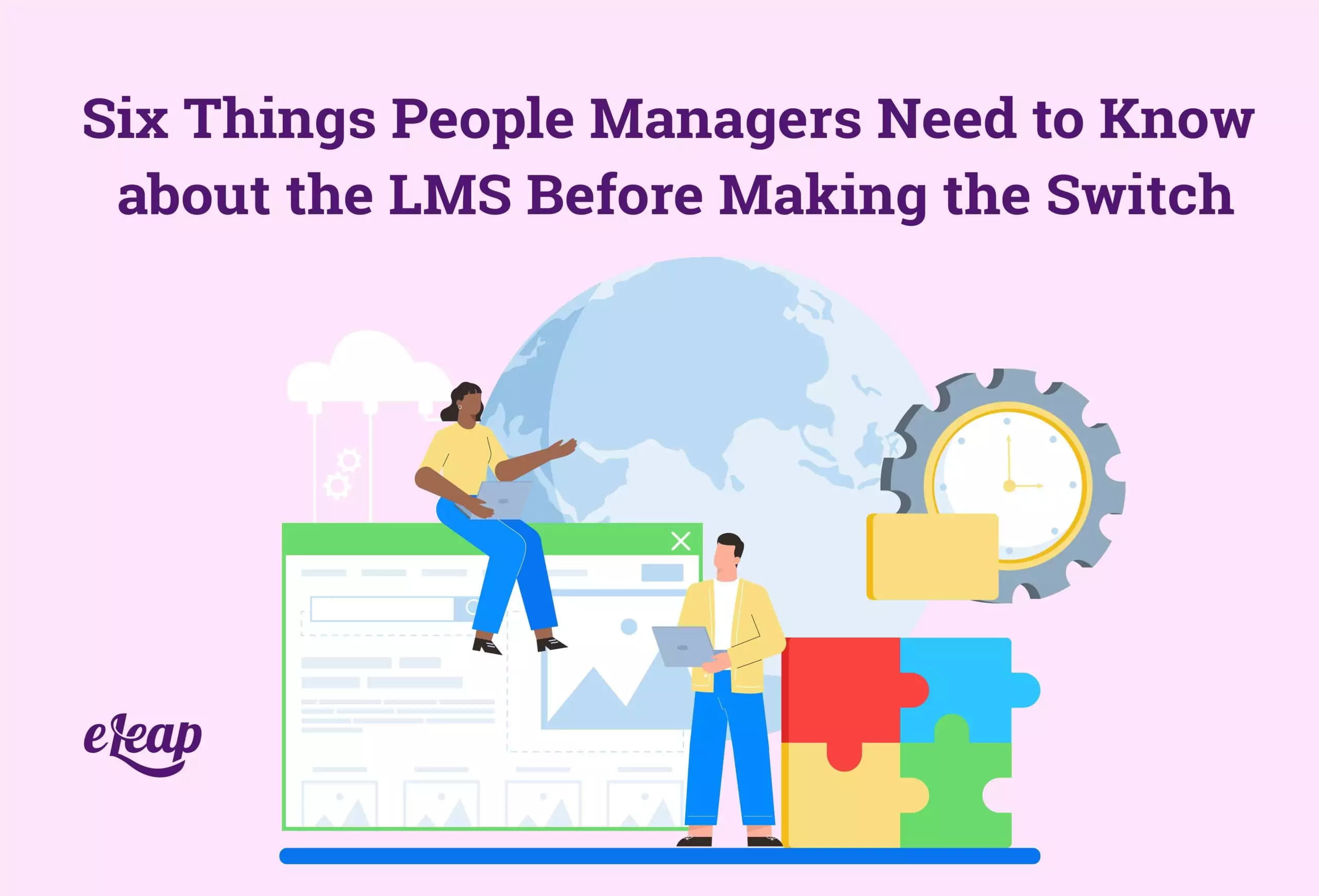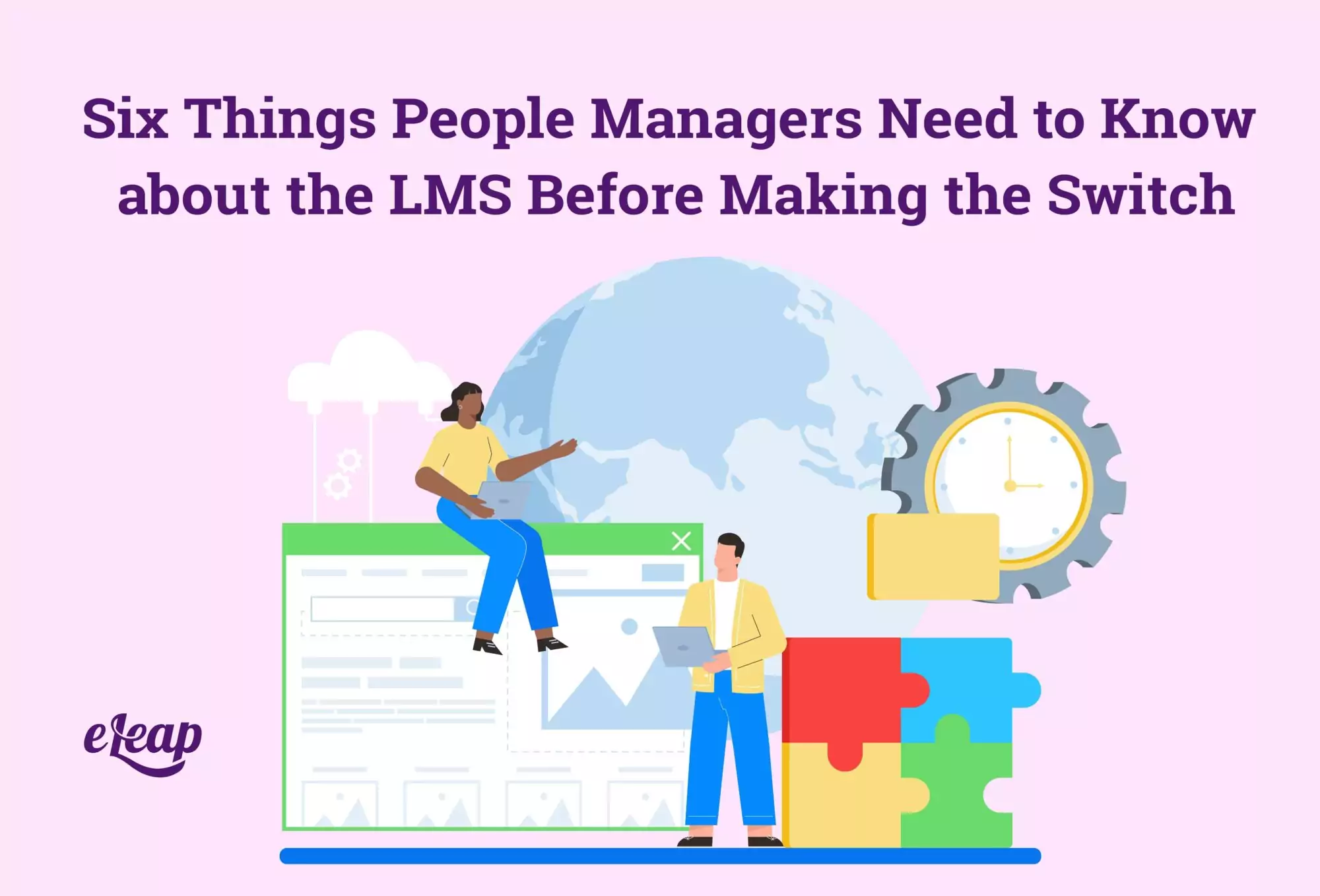Six Things People Managers Need to Know about the LMS Before Making the Switch

Whether you manage a small team or you’re one department of dozens within a corporation, understanding how to properly upgrade to and transition to an LMS is going to be important. To many, the LMS is a dream come true, a technological innovation that has been a long-time coming.
It can be easy to get starry-eyed and focus on the wrong things when choosing and building your own learning management system, but when you go in with a plan, that will be much less likely, and you’ll have much better chances of success with your LMS. Here are Six Things People Managers Need to Know (and business) should keep in mind when getting started with a learning management system.

Watch for Hidden Fees
Too often, companies set budgets without accounting for extra expenses. Having a buffer is going to be crucial to your success in not constantly going over budget on your LMS and its features. You might realize that your LMS no longer works with your existing authoring tool, for example, so you’ll have to invest in a new one. This isn’t something you can specifically “plan for” so it’s best to leave contingency room in your budget so that you’re not drowned with LMS costs that you didn’t anticipate.
Otherwise, you could completely derail your L&D strategy and reduce one of the bigger benefits of upgrading to an LMS in the first place: cost-effectiveness. Make sure that you’re getting detailed price quotes and estimates when shopping for your LMS, too, so that you know what your options are, and you can set your budget accordingly.
There’s No Reason to Start from Scratch
Too often, organizations assume that they are going to scrap their old learning resources and start brand-new with a modern learning management system. Several of the LMS platforms out there today support repurposed content. That way, you can reuse existing material by digitizing it and adding it to your LMS platform. You can update content and modernize your learning modules for easy virtual consumption. Only then will you need to create a strategy for adding new content to your LMS. Once you know what gaps are present, it will be easier for you to find the best additions.
Instructors Still Have a Big Role in Online Training, Or They Can
Another misconception people have is that instructors go by the wayside with the old training methods and tools. However, investing in an LMS doesn’t mean that you have to show instructors and educators the door. Many LMSs will allow you to restructure the way you use these people, transitioning them to remote support, L&D monitoring, and even as hosts of online live training events. The good part of the modern LMS is that these instructors can impart their expertise from anywhere in the world, reducing travel times and increasing the resources available to your organization.
Timelines are Flexible
Some managers and business leaders worry that the ever-important implementation schedule for the LMS is set in stone. It’s important to have enough time for all the steps in the process, but there is no reason to pin yourself down to a finite timeline. Leave room for flexibility, delays, and potential issues that could arise. The general timeline includes:
- Choosing an LMS
- Setup and customization
- Uploading and creating content
- Continuous monitoring and improvement
The amount of time that an organization spends on each step of the process depends on its needs, specifically. Plus, when you factor in the aforementioned contingencies, there are plenty of reasons that you should leave room and flexibility in your LMS implementation timeline.
You Need Custom Reporting
Although there are several features of an LMS that each organization will have to choose for themselves, there are also some that are a must-have. Custom reporting is on that list. Organizations need to be able to deliver content in the best format, assign roles and groups, schedule reports, and handle other aspects of reporting. This will help people managers to keep better track of which employees need a little help or which ones are excelling, even if they haven’t been noticed elsewhere on the job. Custom reporting should include various visualization tools, too, so that you can share the outcomes and results with employees, stakeholders, and other managers.
Support Services Shouldn’t Be Taken for Granted
Sometimes, companies assume they can’t afford the “luxury” of support services. The fact of the matter, though, is that every organization needs to utilize support services to ensure their LMS is functioning properly and that they always have the assistance that they need. At the very least, organizations should have a knowledge base and some FAQs, as well as email support access. However, one-on-one support and other add-ons are worth the investment, as well. And if you are doing a trial of vendor platforms, make sure to check out these resources and their service response times.
Utilize LMS Resources to Create Your Perfect Solution
The best part of learning management systems is that the most popular platforms include so much customization that it is easy for organizations to create what feels like a white-label solution without having to invest that much money in the first place. There are also free consultations and trials of LMS tools that will allow people managers to test out systems and see what they like best, or even just familiarize themselves with the LMS and how it works.
People managers should have input in the selection and development of the LMS platform, and having the right information will make that a much easier task. Remember to pay attention to pricing models and overall cost, as well as the features, customization options, and specialization (if you need it) for dedicated industry software. Take the time to learn about the world of learning and development and how it is changing, as well as how the LMS plays a role in that change, and you can guarantee that you’ll find the ideal LMS for your organization.